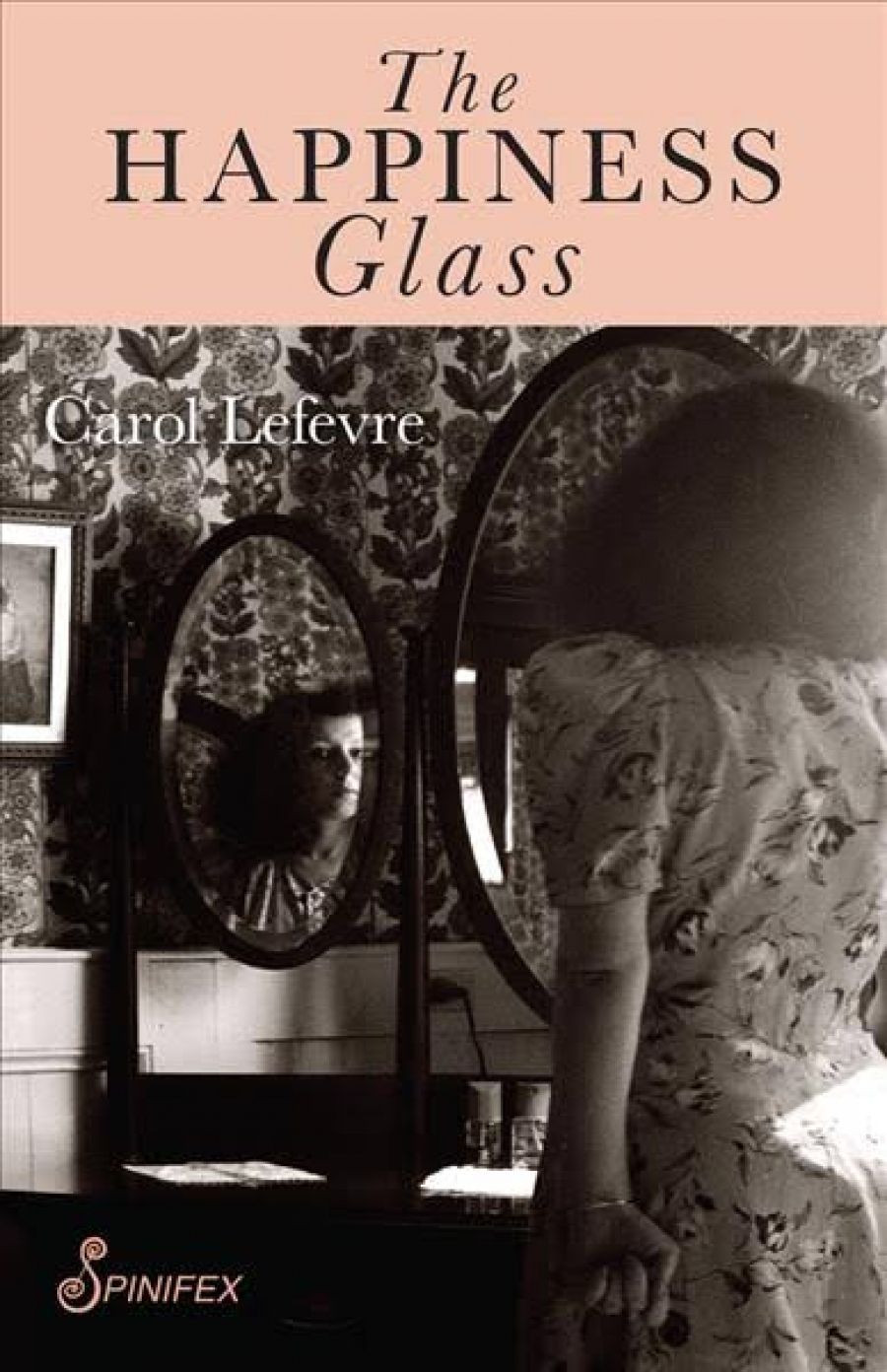
- Free Article: No
- Contents Category: Fiction
- Custom Article Title: Susan Varga reviews <em>The Happiness Glass</em> by Carol Lefevre
- Review Article: Yes
- Online Only: No
- Custom Highlight Text:
Carol Lefevre is the author of two novels and a non-fiction book on Adelaide, all well received and awarded. Yet she is not as well known in her own country as she should be, having spent decades in England. I hope The Happiness Glass will remedy that ...
- Book 1 Title: The Happiness Glass
- Book 1 Biblio: Spinifex Press, $24.95 pb, 124 pp, 9781925581638
Lefevre’s style is both raw and meditative, a fugue of recurring themes: the growth and interplay of a reading and writing life (Flaubert’s Madame Bovary, Woolf’s To the Lighthouse, Amy Witting’s I for Isobel are key markers); a good marriage counterpoised with visceral bouts of homesickness for Australia – somnolent heat and jacaranda flowers. The irresolvable pain of a family life unravelling. The different forms of exile: bodily, spiritually, and from place.
In Part One, the first sentence sets up the territory: ‘In the furnace heat of late summer, 1956, I started school in Wilcannia. It was the year the British government began its bomb tests at Maralinga, and Amy Witting’s first published short story “The Strait of Hellespont” appeared in Southerly.’ For a while this reminded me of a commendable university essay with well-chosen references to worlds outside Wilcannia. But as it turned into a tightly argued, restrained piece, I realised I was in very capable hands.
Next we are introduced to Lily Brennan, whose story illuminates many of the same threads. Just one example: the memoir briefly drops in a phrase used by an unnamed drunken neighbour. The short story repeats the same phrase, this time in the mouth of the fictional neighbour, Dorrie Brickle. Both Dorrie and the narrator begin to take on a nuanced life. The Brickles will reappear twice, filling in their complex backstory.
Part Two heralds new, darker themes. Lefevre compares her body to a car broken down on a busy highway:
Half-a-dozen men lean in close with their bodies pressed against the paintwork, heads under the raised bonnet. The female driver stands mutely to one side and, though outwardly calm … Trapped inside the useless, good-for-nothing car, her helplessness is demoralising.
 Carol Lefevre (photogtaph by Chris Lefevre)In the Lily story, she is a loving nanny to three children. Their mother ignores them while having an affair. Lily, who is reading To the Lighthouse, tries to write in the small breaks from her duties. She identifies with Woolf’s Lily Briscoe: ‘Dust gathering on her fountain pens, and between the pages of her notebooks, while she, like Lily Briscoe sitting alone among the clean cups at the breakfast table, could only go on watching and wondering.’
Carol Lefevre (photogtaph by Chris Lefevre)In the Lily story, she is a loving nanny to three children. Their mother ignores them while having an affair. Lily, who is reading To the Lighthouse, tries to write in the small breaks from her duties. She identifies with Woolf’s Lily Briscoe: ‘Dust gathering on her fountain pens, and between the pages of her notebooks, while she, like Lily Briscoe sitting alone among the clean cups at the breakfast table, could only go on watching and wondering.’
In Part Three, To the Lighthouse figures again in a layered reflection on the meanings of home and on homesickness, ‘some unspeakable disease’. The other cultural markers here are two painters, the American Edward Hopper and the Danish Vilhelm Hammershøi, the former evoking the loneliness of public spaces, the latter the stillness of quiet domestic spaces. Then a lovely riff on the singer Dr G. Yunupingu, whose unearthly voice is ‘nostalgia condensed’. Lily, the alter ego, is with her thirteen-year-old daughter on a trip to Australia, leaving her husband, Tom, behind. She wonders whether ‘she left her husband for a jacaranda tree in flower’. In this story the daughter is a normal rebellious teenager – no hint of what is to come.
The memoir’s focus tightens on adoption in Part Four. The small family returns to Chile, trying to ward off disintegration. The twinned story is chilling. On the last anxiety-filled day, the girl disappears at the airport.
Part Five begins with a quote from Carol Shields’s Unless: ‘Happiness is the lucky pane of glass you carry on your head. It takes all your cunning just to hang onto it, and once it is smashed you have to move into a different sort of life.’ There is no hint of the student essay here, just a beautiful and complex disquisition on pain and loss, Lefevre moving with grace across a wide range of references.
It is almost a relief to return to fiction in the final story, relishing the macabre nursing home scenes where Lily is trapped after a minor stroke. These scenes are worthy of Patrick White. There are many pleasures in this short, cunningly crafted, deeply felt book, not the least of which is consistently good writing.


Comments powered by CComment